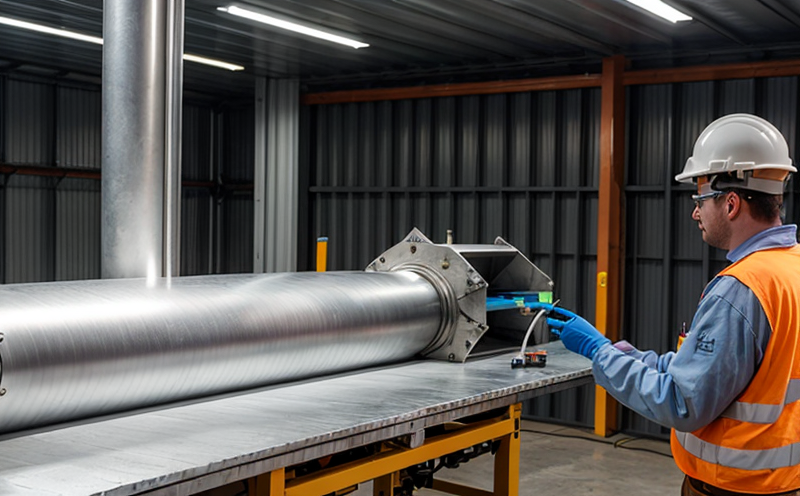ISO 14125 Flexural Testing of Composite Materials for Renewable Systems
The ISO 14125 standard is a critical benchmark in the testing and validation of composite materials used in renewable energy systems. This service focuses on flexural strength testing, which is essential for ensuring that materials can withstand bending stresses without failure. Flexural tests are particularly important for composite components such as blades, structural elements, and other parts subjected to cyclic loading.
Flexural testing helps manufacturers identify material weaknesses early in the design process, enabling them to make necessary adjustments before production begins. By adhering to international standards like ISO 14125, companies ensure that their products meet stringent quality requirements, enhancing reliability and performance. This service is vital for sectors such as wind energy, solar photovoltaics, and marine renewable technologies.
The process involves subjecting a composite specimen to a defined bending load until it fractures or deforms beyond acceptable limits. The test setup typically includes a three-point bend testing machine capable of applying controlled loads at specific rates. Specimens are carefully prepared according to ISO 14125 guidelines, ensuring accurate and repeatable results.
Once the tests are completed, detailed reports are generated summarizing the results, including maximum load capacity, deflection data, and any failure modes observed. These insights provide valuable information for improving product design and enhancing overall performance in real-world applications.
Why It Matters
The integrity of composite materials is crucial to the longevity and efficiency of renewable energy systems. Flexural testing ensures that these materials can endure environmental stresses, mechanical forces, and operational conditions without compromising performance or safety.
- Ensures compliance with international standards like ISO 14125
- Identifies potential weaknesses in material design early on
- Enhances product reliability through rigorous testing protocols
- Supports ongoing improvements in composite technology development
The results of flexural tests contribute significantly to the trustworthiness and reputation of manufacturers within the renewable energy industry. By demonstrating adherence to best practices, companies can build confidence among stakeholders, including investors, regulatory bodies, and end-users.
Scope and Methodology
| Test Parameters | Specifications |
|---|---|
| Load Applied | Defined by ISO 14125, typically between 0.1 and 10 MPa |
| Specimen Dimensions | Standardized according to ISO 14125 guidelines |
| Bending Rate | Controlled within ±10% of the specified rate |
| Acceptance Criteria | Evaluation Metrics |
|---|---|
| Deflection Limit | Less than 1% of the specimen's length under maximum load |
| Fracture Location | In accordance with ISO 14125, focusing on structural integrity |
The testing procedure involves subjecting composite specimens to a controlled bending load until failure occurs. During this process, detailed data is collected regarding the specimen's behavior under stress, including deflection and load capacity. This information helps manufacturers optimize their designs for better performance and durability.
Customer Impact and Satisfaction
- Ensures compliance with international standards like ISO 14125, enhancing product reliability
- Provides valuable insights into material performance through detailed testing reports
- Supports continuous improvement in composite technology by highlighting areas for enhancement
- Builds trust among stakeholders, including investors and regulatory bodies
Our customers benefit from our ISO 14125 flexural testing service through improved product quality and enhanced market reputation. By adhering to stringent testing protocols, manufacturers can ensure that their products meet the highest safety and performance standards.





